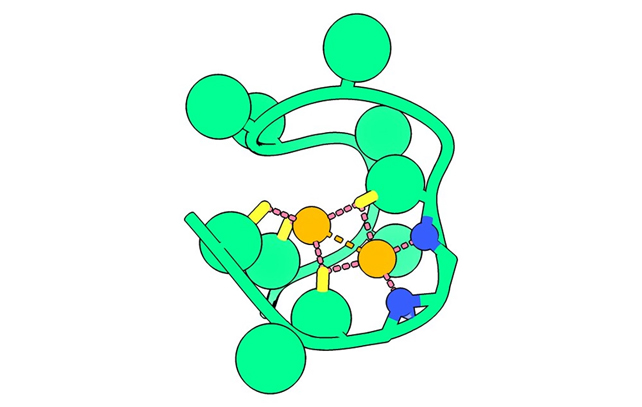There was a critical point early in Earth's history when chemical reactions among the mix of organic molecules began to be powered from within, forming something we might start to think of as biological.
Just what this first metabolic reaction might have looked like remains an area of speculation. It had to have been simple enough to emerge from the assorted components likely to be present already, yet still efficient enough to serve as a catalyst for changes in its environment.
Now a team of researchers from Rutgers University and The City College of New York in the US have identified a protein that may have played a crucial role in getting life as we know it started – a simple peptide they're calling nickelback.
This isn't a tribute to the well-known Canadian rock band, but rather a reference to the protein's backbone, consisting of a chain of amino acids and two nitrogen atoms bonded to a pair of nickel atoms.
Not only could this discovery shed more light on the way that life began here on Earth, it could also give astronomers another clue in the search for life on other planets where these essential chemical ingredients are just beginning to form.

"Scientists believe that sometime between 3.5 and 3.8 billion years ago there was a tipping point, something that kick-started the change from prebiotic chemistry – molecules before life – to living, biological systems," says biochemist and molecular biologist Vikas Nanda, from Rutgers University in New Jersey.
"We believe the change was sparked by a few small precursor proteins that performed key steps in an ancient metabolic reaction. And we think we've found one of these pioneer peptides."
To get to their final peptide design, the scientists started with modern day proteins that power the metabolic processes crucial in driving so many biochemical reactions. Ancient proteins would have been much simpler, so these proteins were then broken down into their most basic parts.
A series of experiments produced nickelback as a likely candidate for being simple enough to form on prebiotic Earth, but complex enough to take energy from the environment and do something with it. It uses a total of 13 amino acids; those molecules are often described as 'building blocks' for proteins and indeed for life itself.
To this basic scaffold, two nickel atoms could attach and mirror the basic activity of the nickel-iron group in [NiFe] hydrogenase and the nickel-nickel cluster in acetyl-CoA synthase, two ancient proteins that continue to play major roles in metabolism today.
Nickel would have been an abundant metal in the first oceans on our planet. Crucially, when bound to the peptide, nickel atoms act as a catalyst in the release of hydrogen gas, which would have been a vital source of energy billions of years ago. Crucially, the team was able to show all of these processes working in the lab.
"This is important because, while there are many theories about the origins of life, there are very few actual laboratory tests of these ideas," says Nanda.
If nickelback played a significant role in getting life started on Earth, it's reasonable to assume that it might be forming on other planets as well – perhaps on planets that aren't as far along in their evolution as we are.
Researchers use what are known as biosignatures to look for life further out in the Universe, chemical traces that might suggest organisms are present or might be developed. Nickelback could potentially be added to that list of biosignatures.
Peering back to the very start of life on Earth isn't easy, but through some clever techniques for working backwards from today, we're gradually getting a better idea of how complex life formed in the first place.
"This work shows that not only are simple protein metabolic enzymes possible, but that they are very stable and very active – making them a plausible starting point for life," says Nanda.
The research has been published in Science Advances.
